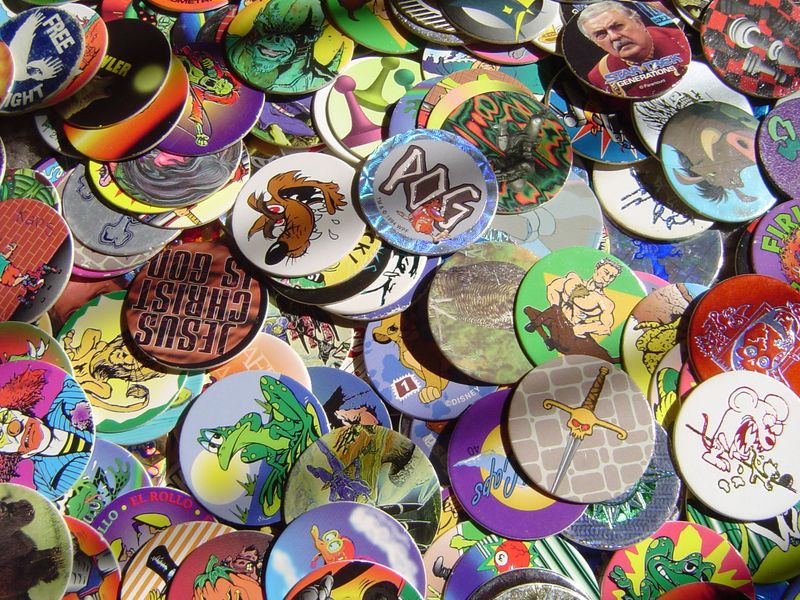Pogs (1920) Board Game
Pogs, also known as milk caps, originated in Hawaii in the 1920s as a game played with milk bottle caps. The game gained popularity in the 1990s when it was marketed as a collectible game with various designs and themes on the caps.
Game Components of Pogs
How To Setup Pogs
To set up Pogs, players decide whether to play “for keeps” or “not for keeps.” Each player contributes an equal number of Pogs to a stack, which is then shuffled to ensure random distribution. The Pogs are arranged in a face-down stack.
Gameplay Mechanics and Game Objective
– Players take turns throwing the Slammer onto the stack of Pogs.
– Pogs that land face up are kept by the player.
– Face-down Pogs are re-stacked for the next player.
– The game continues until all Pogs have been flipped, and the player with the most Pogs wins.
Player Experience
Pogs is a game that requires a mix of skill and luck. Players need to develop their slamming technique to effectively flip the Pogs. The game is highly interactive and can be played with friends, making it a fun and competitive experience. However, it can also lead to distractions and conflicts, especially in school settings, where it has been banned in some cases due to its resemblance to gambling.
Pros
Cons
Personal Thoughts on Pogs
Pogs is a game that is ideal for children and those who enjoy collectible items. It teaches hand-eye coordination and strategy but can be seen as too simplistic for older players. The game’s nostalgic value for those who grew up in the 1990s is significant, and it remains a fun, casual game to play with friends. However, its potential for causing conflicts and distractions means it should be played in a controlled environment.
We are supported by our audience. When you purchase through links on our site, we may earn an affiliate commission, at no extra cost for you. Learn more.

